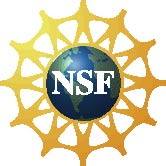Autostichidae Overview
Hodges
(1998) defined this family by the gnathos being an articulated band with an
unarticulated mesial hook, parallel with some Coleophoridae, and the abdominal
terga with spiniform setae in a band across the segment, parallel with Schistonoeinae,
Syringopainae, Blastobasinae, and Pterolonchinae.
Larvae feed on dead
or decaying plant and animal material.
The family includes
more than 308 species in 67 genera that are distributed in the Nearctic, Palearctic,
Australian, and Polynesian Regions (Hodges, 1998).
Holcopogoninae
This subfamily has the female retinaculum composed of a series of anteriorly
directed scales between Sc and R and posteriorly directed scales and setae on
Sc. The hindwing is lanceolate and has Rs and M1 long stalked. Larvae have reduced
or undeveloped stemmata, A1-8 without a pinaculum ring around SD1 or a pore
posterad of SD1, and A9 with 2 extra D setae (Hodges, 1998).
The larva of Holcopogon
bubulcellus feeds on cattle dung.
The subfamily includes
18 species in seven genera, occurring in the Palearctic region, mainly in xeric
areas of the Mediterranean and eastward (Hodges, 1998).
References: Amsel
(1942), Benander (1937), Gozmány (1964, 1967), Hodges (1978), Vives Moreno (1987).
Autostichinae
Hodges (1998) defined
this subfamily by 1) female retinaculum consisting of anteriorly directed setae/scales
from the cell between base of CuA and R to an area between Sc and R, 2), larvae
with pore posterad of SD1 on A1-8, and 3) larva with pinaculum ring around SD1
on A1-8. The hindwing has Rs and stalked/connate/separate M1 (Hodges, 1998).
The abdominal terga have fine, slender setae.
Larvae have been
recorded as feeding on lichens and decaying vegetable matter (Hodges, 1998).
The subfamily includes
120+ species in 18 genera in the eastern Palearctic, Australasia, and Polynesia
regions (Hodges, 1998).
References: Common
(1990), Hodges (1978), Le Marchand (1947), Zimmerman (1978).
Symmocinae
Hodges (1998) defined
this subfamily by the forewing having CuP absent (parallel with Glyphidoceridae,
Cosmopterigidae, Deoclinae, and Gelechiidae), female retinaculum with a series
of anteriorly directed scales between CuA and R, and the gnathos forming a slender
lateral band becoming a mesial hook.
Larvae are scavengers
on dead plant tissue.
The subfamily includes
170+ species in 42 genera, mainly concentrated in the Mediterranean region east
to China in xeric areas.
References: Gozmány (1957, 1959, 1963, 1964), Hodges (1978), Stehr (1987).



